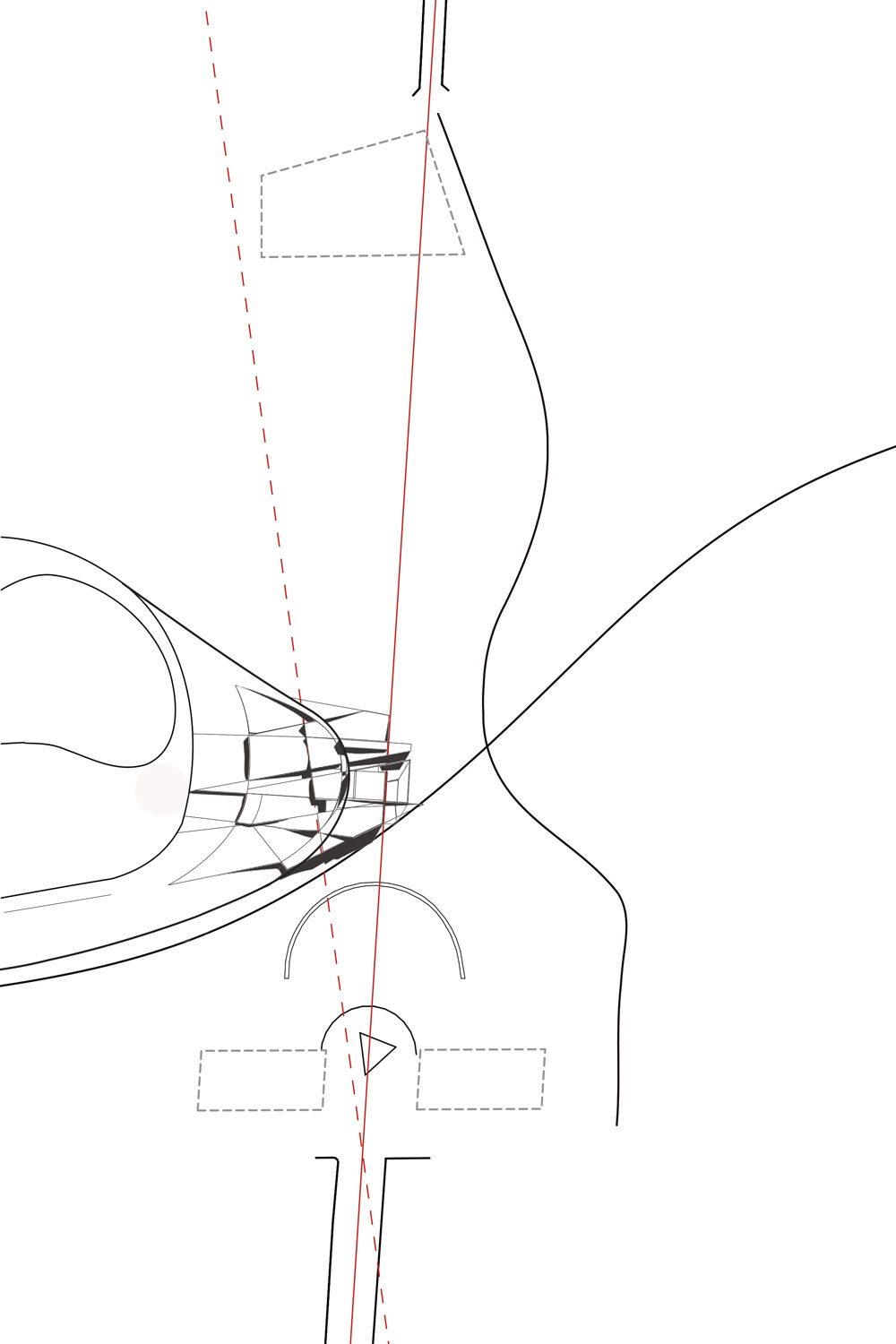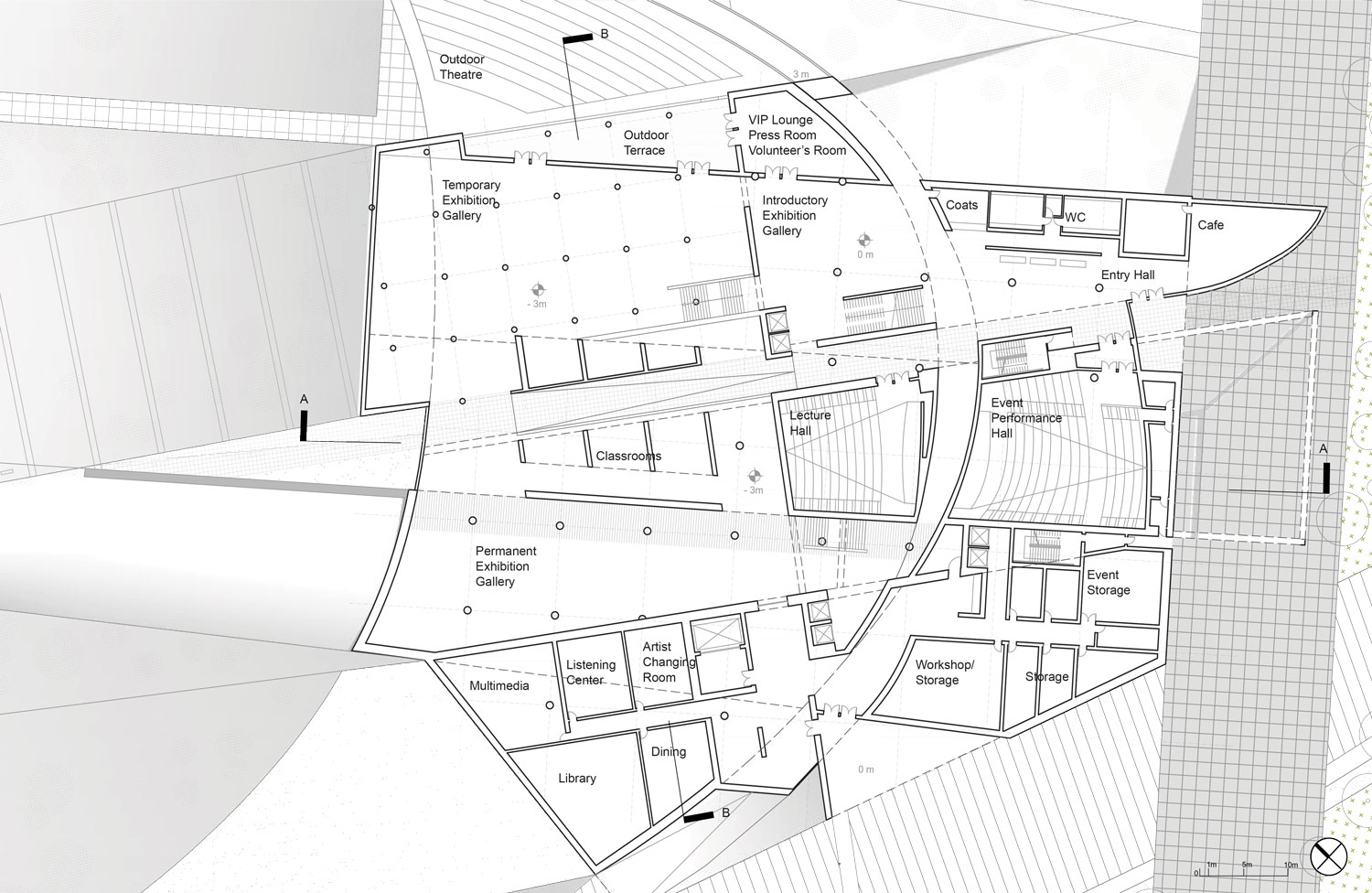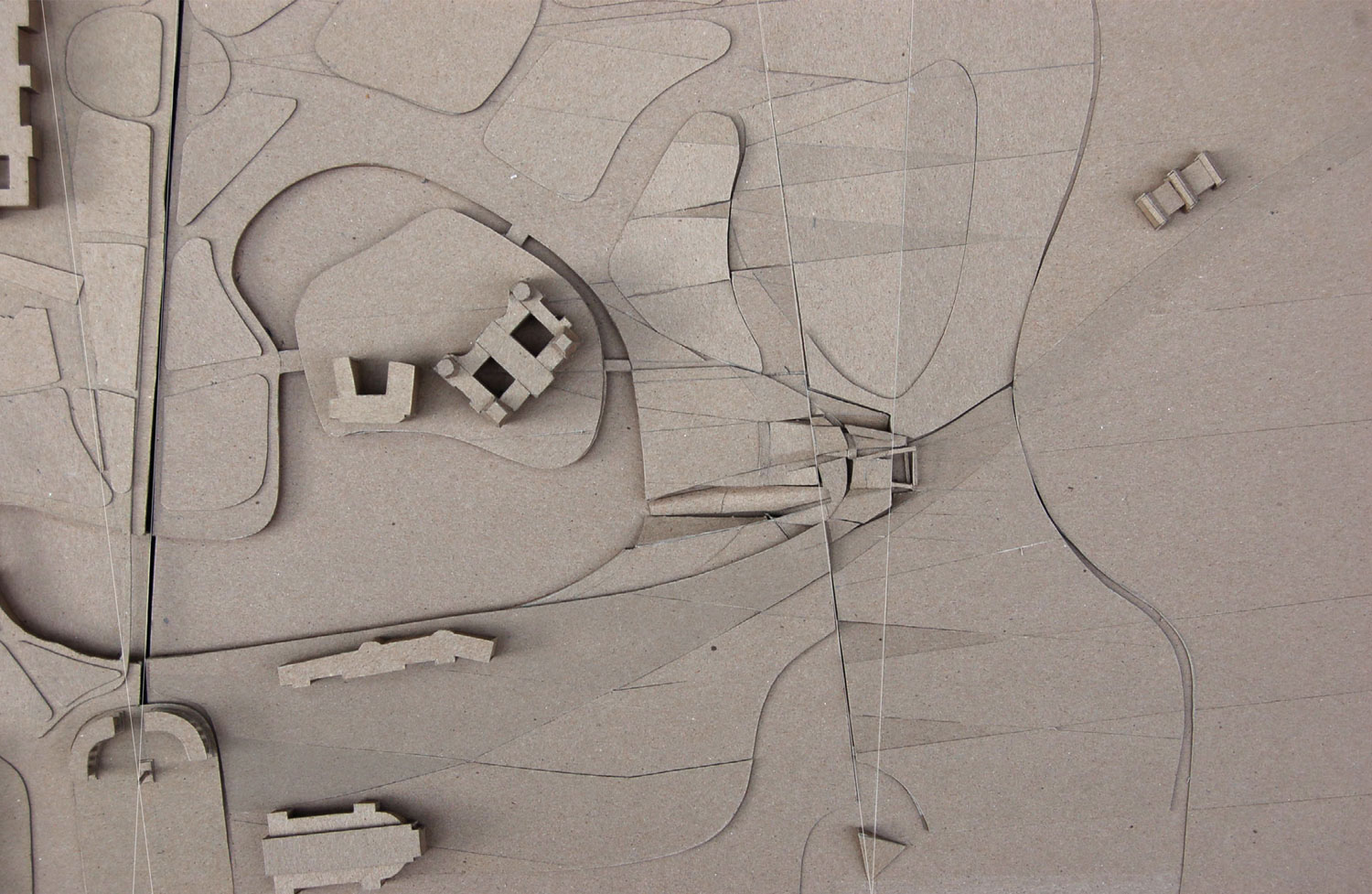
LIGET BUDAPEST HOUSE OF MUSIC
Location: Budapest, Hungary
Year: 2015
The dynamic House of Hungarian Music is a destination and a route of passage, a new center for the study of music that brings together the garden paths in Liget Park and the grids of the city at the park’s edges. The major east-west axis extends Városligeti Fasor, which becomes a connecting line between the proposed Photography and Architecture Museum and the New National Gallery, as well as a trace of of the historic Andrássy Boulevard. These axes represent urban fabrics of different orientations that approach the park from the southwest. When extended, physically and/or conceptually, into the park, the degree of difference between these almost parallel east-west axes creates a frame-work between which we stitch together natural and manmade forms in a “cross-axial” north-south direction. The resulting form is the confluence of Liget Park’s histories, which produces both a recognizable civic symbol and a new idea of a cultural icon. As an inter-section of axes and forms rather than a singular, monolithic object, the undulating build-ing aspires to celebrate both the Hungarian Art of Music and Budapest itself, a city itself animated by the act of convergence that occurred with the historical unification of Buda and Pest.
Goethe may have been right when he wrote “Music is liquid architecture,” but the often quoted second part of that statement – “Architecture is frozen music” – is no longer val-id today. Built architecture may be as static as the notes published on a staff, but just as those notes denote tempo, rhythm, and sound, the shaping of forms and pacing of spac-es sets architecture seemingly in motion, creating its own cadences of movement and sound.
Our architectural strategy of differentiated forms reveals the culture of music to park visitors, museum ticket holders, musicians, students, artifact handlers, and museum personnel alike. The traditionally singular nature of a cultural icon – the “one note” – is reconceived as a multivalent collection of building volumes – a play of notes – that ac-knowledges the park context while simultaneously transforming it. Those people whose destination is the House of Hungarian Music will enter from the pedestrian extension of Városligeti Fasor, passing through an architectural frame and along a curved entry wall that is a full-height screen for moving images or signage. People simply visiting Liget Park will still have public access to the activities of the building without actually entering. This is done via a ramp that begins in the park and rises three meters to sweep through and bisect the building, while providing visual and acoustic access to the activities within. The arc of this ramp echoes the arc to the north of the site and relates the natural curved form of the lake to the proposed building. While “in” the building, people on the ramp will experience the undulating roofs of the forms of the building, which suggest various spatial rhythms. On its eastern end, the ramp becomes part of the outdoor amphithe-ater that is tucked into the east edge of the House of Hungarian Music. While the main entry to the museum is along the Városlegit Fasor east-west axis, visitor movement into the entry hall and museum follows the north-south grain of the site, emphasizing the confluence of site paths in and around the immediate building footprint.
Temporary and Permanent collection galleries border the north edge of the site adjacent to the City Park Lake in order to insulate the sound galleries from the more heavy pedestrian traffic anticipated along the proposed Városligeti corridor. Rather than isolate the event and lecture halls as separate entities, these volumes, 500 and 300 seats respectively, are located near the main entrance, where they can operate independently of the opening hours of the museum areas. Movement into and through the building, whether descending the central ramp to the galleries, with a lake view ahead, or quickly dashing into an auditorium performance, occurs in spaces that can also be closed down or opened up to adjacent zones. This pacing of spaces, like the playing of the composer’s score, enhances the visitor’s visual, auditory, and spatial experiences.
Concept







Drawings






Model photos


Images

